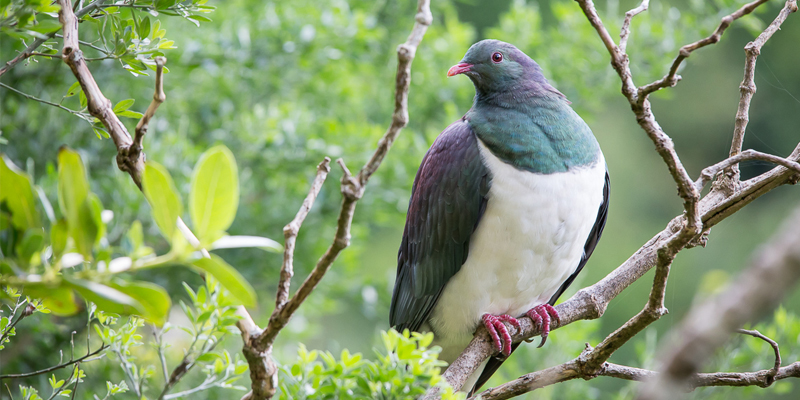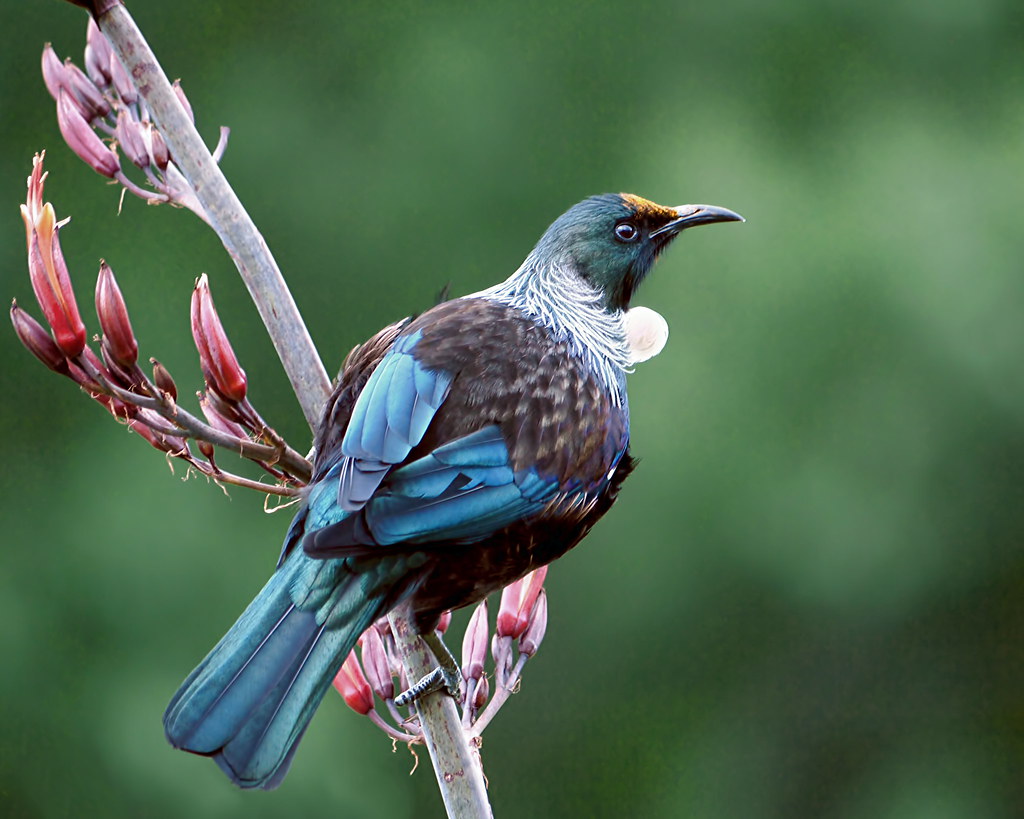DAY 3: Taking Flight
Activity 1: Bird of the Year! [4 points]
Aotearoa New Zealand is home to many different kinds (species) of native birds. Sadly, about a third of our native bird species are at risk of disappearing forever (becoming extinct).
Each year, Forest and Bird New Zealand hold a ‘Bird of the Year’ competition where people can vote for their favourite native bird. This year, the winner was the kererū (or woodpigeon).
Go onto the Bird of the Year website, look through the native birds on the site, and choose one that interests you.
On your blog, write a short description of your bird. Where does your bird normally live? What does your bird normally eat? Post a picture of the bird underneath your description. Be sure to attribute your picture properly.
Tui's are found throughout the three main islands of New Zealand. They are scarce only in drier, largely open, country east of the Southern Alps. They live in native forests, bush reserves, and bush remnants.
Tui's mainly feed on the nectar from flowers of native plants, such as kōwhai, puriri, rewarewa, kahikatea, pohutukawa, rātā and flax. They will sometimes eat insects too. They are important pollinators of many native trees and will fly large distances, especially during winter for their favourite foods.
Activity 2: Flying Foxes [4 points]
vNot only is New Zealand home to many native birds but we also have a number of native bats. Some of these bats are really small while others are much larger. None, however, are as large as the largest bat in Australia. It is called the flying fox (pictured below) and it has a wingspan of up to 6 feet or 2 metres. Wow! That is taller than most of us! 
Flying foxes usually sleep during the day and hunt for food at night, using their ears to guide them through the darkness. Like other bats, they have the best hearing of any mammal. It is their ‘superpower.’
If you could have a superpower, what would it be? If I could choose, I would like to be able to fly. It would make it possible for me to fly back to Canada and visit my family whenever I wanted. How amazing would that be?!
On your blog, tell us what superpower you would like to have and why you’d like to have it.
If I could have a superpower, I would like to be able to fly. It would be cool to fly through the air passing the cars. It would be easy to visit places, no traffic except fellow birds. Flapping as the air catches them. This is what my superpower would be.
Activity 3: Wind Beneath My Wings [10 points]
Birds and bats are just two species of animal that are able to fly. Did you know that some fish, squirrels and snakes are also able to fly? Check out the ‘Top 10 Flying Animals of the World’ website to learn more about these incredible animals.
Once you have explored the site, choose one animal and create a digital learning object (DLO, eg. a poster) that tells us all about the animal. Be sure to include at least three interesting facts and a picture or two of your animal! Please follow these instructions for attributing your pictures properly.
Here is an example of a DLO that was created about lions.
